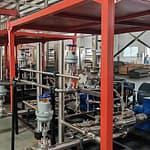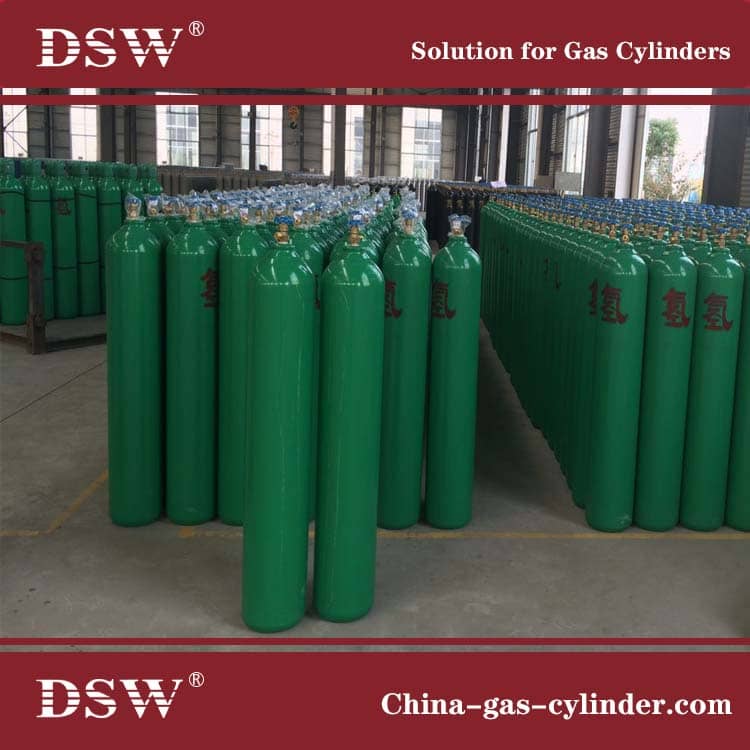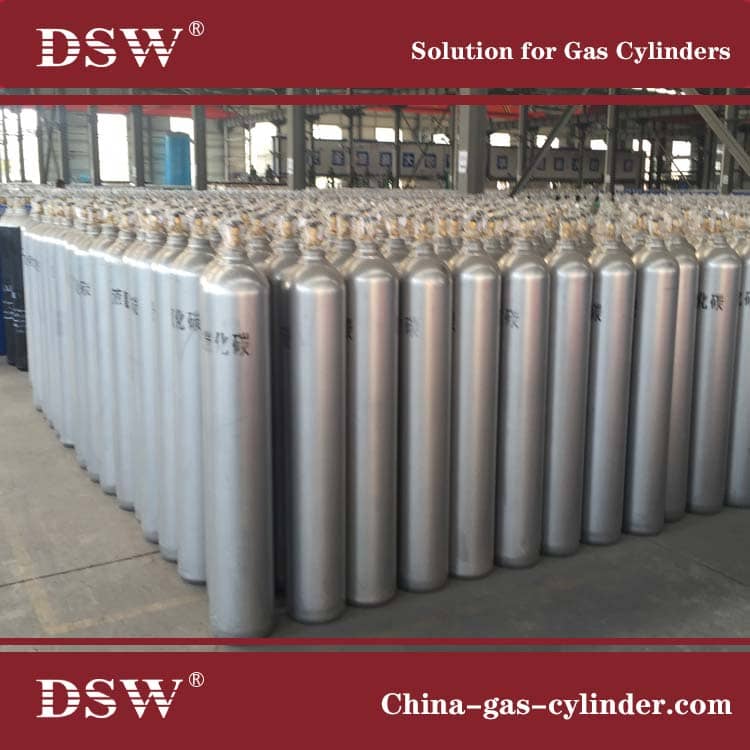Compressed Gas Cylinder
DSW Industry offers a variety of high and low-pressure Compressed gas cylinders for a safe and reliable gas supply.
Compressed gas cylinders are regularly used in science and engineering buildings, machine shops, retail stores, and campus dining.
Researchers, staff, and contractors store and use various compressed gases for different reasons.
Many compressed gases are stored under extremely high pressures. (Up to 2,500 PSIG or pounds per square inch gauge).
Compressed Gas:
Compressed Gas is a term used to describe compressed gases stored in cylinders.
Compressed gas pressure is much higher than that of the surrounding air.
Liquefied, non-liquefied, and dissolved are the three main compressed gas types.
A material in a container with an absolute pressure greater than 276 kilopascals (kPa), or 40 psi (pounds per
square inch) at 21 degrees Celsius or a total pressure greater than 717 kPa (104 psi) at 54 degrees Celsius, or both, or any liquid,
flammable material having a Reid vapour pressure greater than 276 kPa (40 psi) at 38 degrees Celsius
compressed air gas cylinder sizes

Features
Pressure Resistance: Industrial gases such as oxygen, nitrogen, argon, and carbon dioxide are often stored in compressed gas bottles. The pressure in these cylinders can range from 200 to 3000 psi (pounds per square inch) or approximately 14 to 207 bar.
Strength and Durability: Compressed gas cylinders are typically made from durable materials such as steel or aluminium alloy. These materials provide strength and structural integrity to withstand the forces exerted by the high-pressure gases.
Valve System: Each compressed gas cylinder is outfitted with a valve system that allows for controlled release or regulation of the gas flow.
Pressure Devices: Compressed gas bottles often include pressure relief devices, such as burst discs or valves, to prevent over-pressurisation. These safety mechanisms release excess pressure if it exceeds the maximum allowable limit.
Transportability: Compressed gas bottles are designed to be portable and easy to transport.
Gas Compatibility: Compressed gas cylinders are manufactured to be compatible with specific gases or gas mixtures.
Size Range: These sizes range from small portable bottles used for welding or medical applications to large cylinders used in industrial processes or gas distribution.


Compressed Gas Bottles, which can store any compressed Gas under pressure 20MPa or 25MPa made of 4130X
seamless steel tube with ISO9809-1/ISO9809-3/EN/DOT approval.
which are explosive pressure vessels containing flammable and explosive gases.
The storage pressure for automotive cylinders is 20MPa.
Industrial Applications
Compressed cylinders have a wide range of applications across various industries. Here are some key areas where they find use:
Welding and Cutting: Gases like oxygen, acetylene, and propane are essential for various welding and cutting processes. These gases are stored and delivered in compressed cylinders.
Metal Fabrication: Inert gases like argon and nitrogen create oxygen-free brazing, soldering, and heat treatment environments. These gases are supplied through compressed gas cylinders.
Chemical Processing: Many chemical reactions require specific gaseous environments. Compressed gas cylinders provide a convenient source of various gases for these processes, such as hydrogen, nitrogen, and chlorine.
Food and Beverage Processing: The food and beverage industry utilizes compressed gases like carbon dioxide and nitrogen for carbonation, inerting, and modified-atmosphere packaging tasks.
Manufacturing: Compressed cylinders are used in a variety of manufacturing processes, including:
Pneumatic tools and machinery operation (using compressed air)
Glass blowing (using oxygen)
Electronics manufacturing (using inert gases like nitrogen)
Calibration and Testing: High-purity gases in compressed cylinders are used to calibrate instruments and test equipment in various fields.













